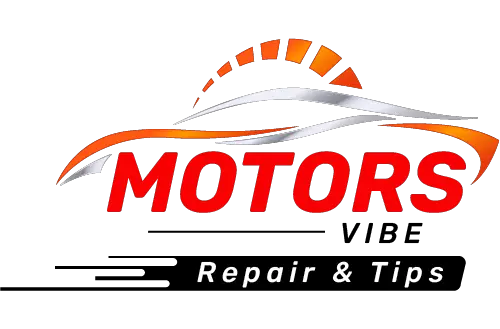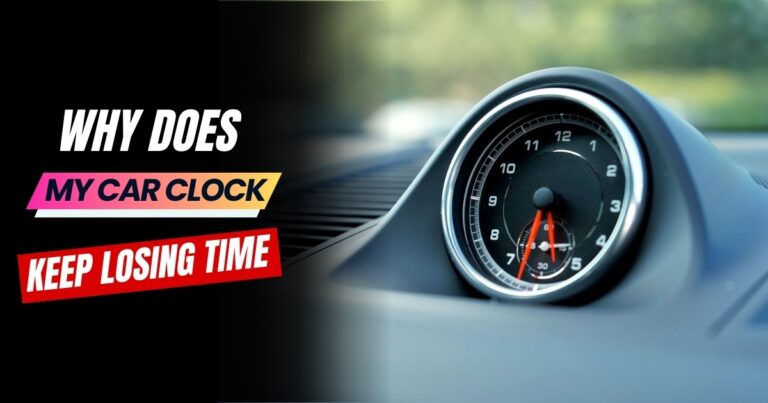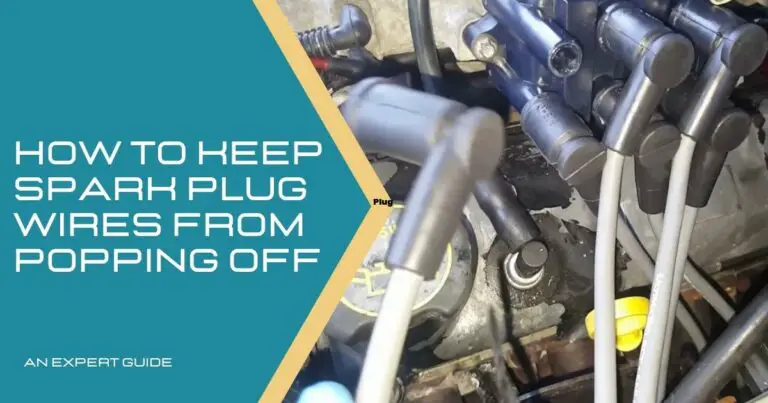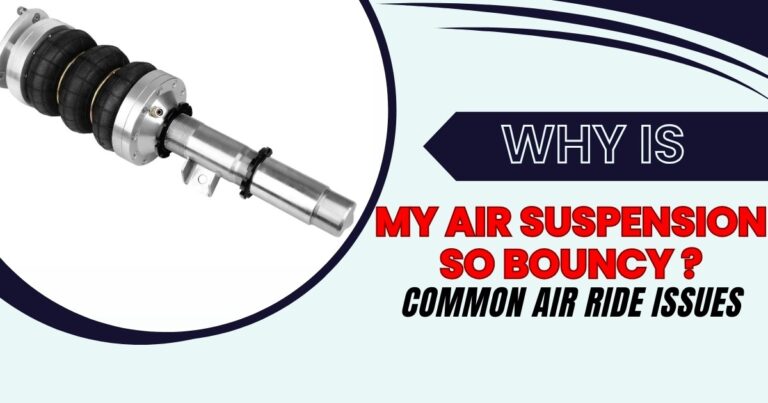When VSA Light Signals Trouble: Car Jerks Acceleration Woes
Have you ever experienced your car’s VSA light suddenly lit up, putting you in a tricky situation on the highway? If you have, you’re not alone. Many drivers have faced the unexpected challenge of the Vehicle Stability Assist (VSA) system acting up and blinking light. This can cause worries about safety and how well your car performs.
Why should you care? Well, the VSA light signal is not there for decoration. Now, if you observe the VSA light blinking on your console, there’s no need to fret about a fault or other warning. The flashing light indicates that the system has engaged and is actively assisting the car in steering more safely.
However, ignoring the light altogether could mean bypassing potential issues that might affect how your car handles the road. In this article, we’re going to zero in on why VSA light matters and specifically, how it links up with car jerking and acceleration problems.
What is VSA in a Car?
VSA, short for Vehicle Stability Assist, is a sophisticated system engineered to improve a vehicle’s stability and grip, especially in demanding driving situations. Its primary function is to prevent skidding and maintain control by applying brakes to specific wheels selectively and, in certain instances, modifying engine power.
VSA relies on a network of sensors to collect data about the vehicle’s behavior. These sensors include wheel speed sensors, steering angle sensors, yaw rate sensors, and lateral acceleration sensors. The data collected by sensors is processed by the Electronic Stability Control (ESC) module, which allows the system to make real-time decisions to enhance vehicle stability.
VSA assists in maintaining traction by detecting if a wheel is spinning faster than the others, indicating a slipping possibility. It then applies brakes to that specific wheel to regain traction. In situations where the vehicle’s direction deviates from the driver’s intended path (such as during skidding), VSA intervenes by applying brakes to individual wheels, which helps to bring the vehicle back on course.
Some VSA systems also have the ability to adjust engine power by modulating the throttle, which contributes to stability during acceleration. This process not only enhances stability but also promotes fuel efficiency by optimizing power delivery in real-time.

The VSA Light- What it Indicates
The VSA indicator light is a dashboard indicator in vehicles equipped with the VSA system. When the VSA light illuminates, it signals the activation of the system, implying that the system is actively working to enhance your car’s stability and control.
The VSA system engages in response to challenging conditions, which may include adverse weather and slippery surfaces like ice, snow, or wet roads. Sudden steering inputs that may lead to instability can also trigger VSA intervention. In addition, quick changes in speed, especially during acceleration or braking, can prompt VSA to engage.
As we stated, the mechanics of VSA involve automatic adjustments to the engine output and the individual application of brakes to each wheel. This process helps enhance traction and ensures the vehicle remains under the driver’s close control. When the VSA system is active, you may observe several adjustments in the vehicle’s handling, including;
- Accelerator Response: The VSA system intentionally moderates the accelerator response by limiting the increase in engine power. This deliberate adjustment aims to prevent excessive wheel spin, especially in challenging driving conditions.
- Engine Output Adjustments: VSA may momentarily decrease the engine’s power output even when the accelerator is pressed. This feature is designed to enhance stability during rapid acceleration, thereby preventing skidding or loss of control.
- Automatic Brake Application: VSA can autonomously apply brakes to specific wheels when necessary. The brake application is a subtle and gradual measure designed to enhance traction and stability, thus ensuring a smoother and safer driving experience.
VSA Light Problems
If the VSA activation indicator stays constantly lit instead of blinking, it typically means that the system has been deactivated through the console switch. To address this, you’ll only need to turn the VSA system back on and clear the light. However, if the VSA system indicator lights up and remains on continuously, it could indicate a fault within the VSA system.
Ignoring the illuminated VSA warning light can have several repercussions on vehicle safety and stability. For instance, the VSA system may not effectively intervene during situations where stability is crucial, increasing the risk of skidding or loss of control.
Several factors can trigger the illumination of the VSA warning light including;
Sensor Malfunctions
The effectiveness of the VSA system hinges on the accuracy of its sensors. Any issues with these sensors can prompt the activation of the VSA light, as a sign of disruptions in the system. This can lead to instabilities in the vehicle’s handling and interfere with its ability to respond to challenging driving conditions.
ABS Problems
The Anti-lock Braking System (ABS) is closely tied to VSA. Issues within the ABS, such as sensor faults or hydraulic problems, can have a direct impact on the VSA system, leading to the activation of the warning light for you to take action.
Traction Control System Issues
Since VSA works in conjunction with the traction control system, any malfunctions in this system can also compromise the VSA system. For instance, sensor faults or electronic glitches within the traction control system can make the VSA light come as a sign of an underlying problem.
Symptoms of VSA Troubles- Car Jerks and Acceleration Woes
If the VSA system is compromised, drivers may encounter troubles that not only affect the driving experience but also pose safety concerns. Ignoring these symptoms elevates the risk of accidents, especially in dynamic driving situations. A compromised VSA system can exhibit a range of symptoms, but the most common ones are car jerks and acceleration troubles.
Jerky Movements
When the VSA system encounters problems, one notable symptom is the presence of jerky movements during acceleration. These movements are characterized by abrupt and uneven motions that disrupt the smoothness of the driving experience.
Instead of the expected seamless acceleration, drivers and passengers may feel a series of jolts, creating an unsettling and erratic environment within the vehicle. These jerky movements are often a sign of the VSA system struggling to maintain stability during acceleration.
Performing a VSA system reset is often the best way to address occasional VSA light car jerks when accelerating. Generally, resetting the system will help recalibrate the system and resolve minor issues. If issues persist, you may want to seek professional assistance for a thorough diagnostic scan and necessary repairs.
Acceleration Difficulties
The VSA system is intricately linked to a vehicle’s overall performance, particularly during acceleration. Malfunctions in the VSA system can directly contribute to acceleration woes. When the VSA system is compromised, drivers may encounter difficulties maintaining smooth acceleration.
This is characterized by hesitations or irregular power delivery during the acceleration process. Instead of a seamless and predictable increase in speed, drivers may feel intermittent surges or lags, creating a less-than-optimal driving experience.
As the VSA system struggles to maintain stability, it might diminish its ability to coordinate with the engine and transmission when accelerating. This lack of coordination often manifests as difficulties in achieving smooth and consistent acceleration.
How to Troubleshoot VSA Troubles
- Check Warning Lights: Monitor the dashboard for any illuminated warning lights related to the VSA system. If warning lights are present, you may want to consult your vehicle’s manual to interpret the codes and understand the nature of the issue.
- Perform a Visual Inspection: Check VSA system for frayed wires, corroded connectors, or physical damage. If you detect any issues during the inspection, address them promptly to ensure the proper functioning of your vehicle’s VSA system and the related components.
- Scan for Error Codes: Use an OBD-II scanner to check for error codes in the VSA system. These codes can provide insights into specific malfunctions or sensor failures.
- Verify Brake System: Ensure that the brake system is in good condition. Any malfunctions in the brake system can compromise the VSA’s effectiveness. Ensure you inspect brake pads, rotors, and fluid levels regularly to enhance overall vehicle safety and the proper operation of the VSA system.
- Inspect Tires and Alignment: Check tire conditions, including pressure and tread depth, and ensure proper wheel alignment. Adequate tire maintenance ensures optimal performance and helps prevent problems related to stability and acceleration.
- Throttle and Accelerator Inspection: Inspect the throttle and accelerator systems to verify functionality. Clean any debris or carbon buildup to ensure proper responsiveness. This will, in turn, help enhance the overall performance of the vehicle and ensure a smooth driving experience.
- Software Updates: Check for software updates for the VSA system to improve overall performance. Manufacturers may release updates that helps enhance the functionality and stability of the VSA system. Updating the software will also help ensure optimal performance and responsiveness in varying driving conditions.
- Perform a VSA System Reset: As mentioned earlier, consider performing a VSA system reset to help recalibrate the system and resolve issues contributing to jerky movements and acceleration difficulties. In most cases, resetting the system will prove effective in restoring the proper functioning of the VSA system.
- Drive Conservatively: Drive responsibly while troubleshooting VSA issues to reduce the likelihood of exacerbating any existing issues. Avoid aggressive acceleration and deceleration to minimize the impact of VSA-related troubles until the underlying problems are resolved.
The Parting Shot!
If you observe VSA light during challenging driving conditions, it often indicates that the system is actively working to enhance stability. However, if the flashing persists in normal driving conditions, it might be a sign of a fault within the VSA system. You can still drive during this period, but you might experience jerks and acceleration difficulties, especially in challenging conditions. Therefore, it is advisable to exercise additional caution while driving until you resolve the issue.






